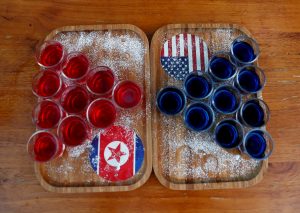
By Emma Batha
LONDON (Thomson Reuters Foundation) – Millions of children around the world live in orphanages, but child rights experts say most are not orphans.
Orphanages have become a lucrative business in developing countries, attracting generous funding. This has led to the trafficking of children to fill them, according to charities Forget Me Not and Lumos.
The two charities, which will talk about orphan trafficking at the Thomson Reuters Foundation’s Trust Conference in London on Wednesday, are calling for an end to orphanages which they say cause immense harm to children.
Here are some facts:
– An estimated 8 million children live in orphanages and other institutions worldwide, but 80 percent are not orphans.
– Research shows orphanages harm children’s social, emotional, and cognitive development.
– Institutionalisation of very young children has a similar impact on early brain development to severe malnutrition or maternal drug use during pregnancy.
– Young adults raised in institutions are 10 times more likely to fall into sex work than their peers, and 500 times more likely to take their own lives.
– Placing a child in an orphanage quadruples the risk of sexual violence.
HAITI
– The number of orphanages in Haiti jumped by at least 150 percent following the 2010 earthquake.
– Some 30,000 children live in 750 orphanages in Haiti, but Haiti’s government estimates 80 percent have at least one living parent.
– Only 15 percent of orphanages are registered.
– Lumos estimates that funding to all Haitian orphanages is upwards of $100 million a year.
– Its research suggests 92 percent of orphanage funders are from the United States, and 90 percent are faith-based.
– Institutional care is four times more expensive than providing health, education and social support to keep a child in its family.
CAMBODIA
– Cambodia has promised to return thousands of children in orphanages to their families.
– A survey published in 2017 found 16,579 children living in 406 orphanages with nearly 10,000 more living in other care facilities. Most had at least one living parent.
– The number of orphanages jumped by about 60 percent between 2005 and 2015, and the number of children in them by nearly 80 percent.
– The growth in orphanages comes despite a decline in the number of genuine orphans.
– Half of the orphanages are in the capital Phnom Penh and Siem Reap, both tourist destinations.
“VOLUNTOURISM”
– The growth in orphanages is fuelled by tourism, including “voluntourism” where people work short stints in orphanages.
– Orphanage volunteering is a concern in at least 18 countries including Cambodia, Nepal, and Uganda.
– Countries such as the United States, Britain, and Australia are major contributors to the supply of volunteers.
– The continuous rotation of volunteers harms children psychologically, leading to attachment issues in adult life.- There is often no screening of volunteers, leaving children vulnerable to sexual abuse.
– Australia is the first country to recognize orphanage tourism as a form of slavery.
Sources: Lumos, Forget Me Not, Save the Children, UNICEF
(Reporting by Emma Batha @emmabatha; Editing by Katy Migiro. Please credit the Thomson Reuters Foundation, the charitable arm of Thomson Reuters, that covers humanitarian news, women’s and LGBT+ rights, human trafficking, property rights, and climate change. Visit http://news.trust.org)












